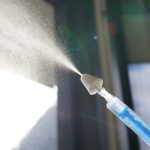 Recent reports have highlighted a regional police officer who, after being exposed to potent opioids, had a possible associated toxicity.
Recent reports have highlighted a regional police officer who, after being exposed to potent opioids, had a possible associated toxicity.
This report recognized the unpredictable and potentially dangerous environments faced by law enforcement and medical responders almost every day.
As the opioid epidemic continues to devastate lives across Pennsylvania and the rest of the nation, law enforcement and medical responders are put at a greater health risk as they attempt to save the lives of those impacted by heroin addiction.
UPMC toxicologists and Pittsburgh Poison Center specialists have performed ongoing surveillance of drug identification in local and statewide trends surrounding the distribution and availability of heroin in collaboration with agencies such as the Drug Enforcement Agency, FB I and medical examiner’s office.
Through this research, we are now able to provide Pennsylvania State Police, Pennsylvania and Allegheny County departments of health and Allegheny County Office of the Medical Examiner practical recommendations to protect these individuals as they work to protect our communities.
As it turns out, the actual risk of an exposure to opioids leading to toxicity is unlikely. However, as we see expanding distribution of potent drugs, that risk continues to grow. Powdered drugs are not readily absorbed through the skin, but given the potency of drugs like carfentanil, even small exposures can be potentially dangerous — particularly when those handling the drugs are sweating or overheated.
Avoidance of skin contact and wearing gloves should prevent exposure, though certain circumstances may not allow such precautions. More likely, as has been reported in media outlets, potential exposure could be related to dust or powder becoming airborne. This is most likely to occur if these powerful drugs are disturbed.
If left undisturbed, regular donning of masks is unnecessary. However, when large amounts of powdered drugs are visualized or aerosolized through disruption, masks and other protective equipment may be necessary.
Fortunately, these situations are uncommon, and the possible exposures that have been reported thus far have not resulted in symptoms of opioid toxicity — which would include sleepiness and reduced rate of breathing. However, we must remain vigilant of even the slightest possibility and prepare to respond in addition to taking steps to avoid contact.
Naloxone remains the mainstay of pharmacologic therapy for a presumed overdose of an opioid. In Pennsylvania, naloxone is available to all residents at participating pharmacies under a standing order from Pennsylvania Physician General Dr. Rachel Levine. It is covered by most insurances, Medicare and Medicaid products with a small co-pay, but it is also available for purchase outside of insurance.
Naloxone is safe and easy to administer. Rapid response to an overdose with rescue breathing and administration of naloxone can be lifesaving and is recommended for all first responders, as well as individuals at risk of overdosing, their families and friends.
UPMC and the Pittsburgh Poison Center continue to develop strategies to protect Pennsylvania residents, as well as our critical first response teams and law enforcement partners from the growing heroin epidemic. This is accomplished through advancing the quality and availability of addiction treatment.
To learn more about UPMC’s role in fighting addiction disorders, visit www.upmc.com/Services/behavioral-health/addiction
Dr. Michael Lynch is the medical director of the Pittsburgh Poison Center and assistant professor of emergency medicine at the University of Pittsburgh Department of Emergency Medicine.









